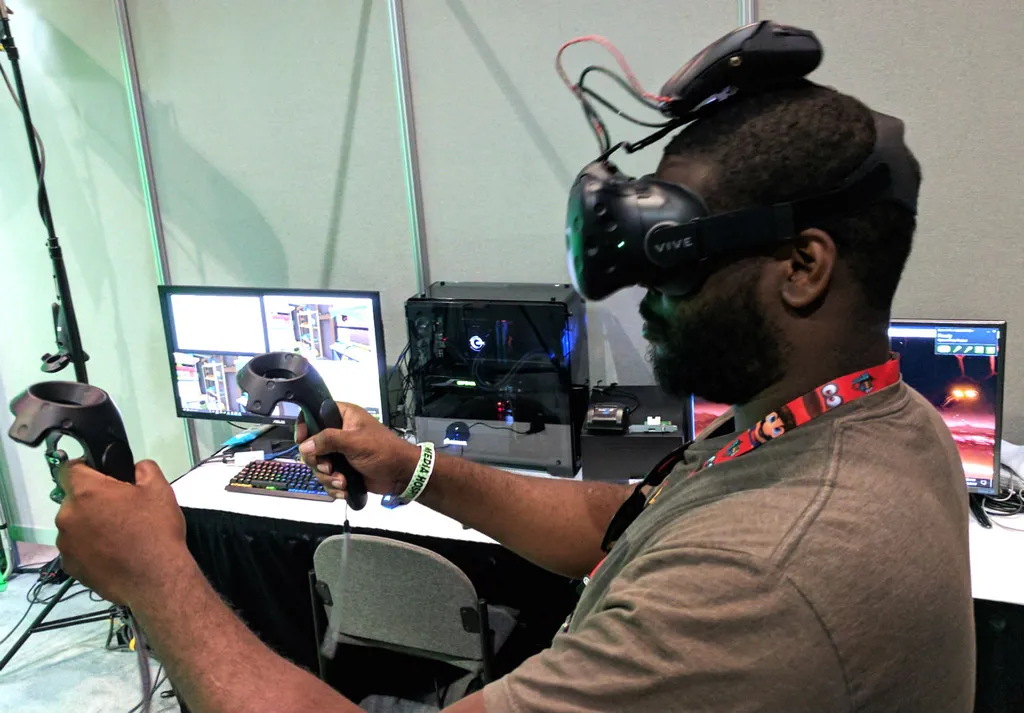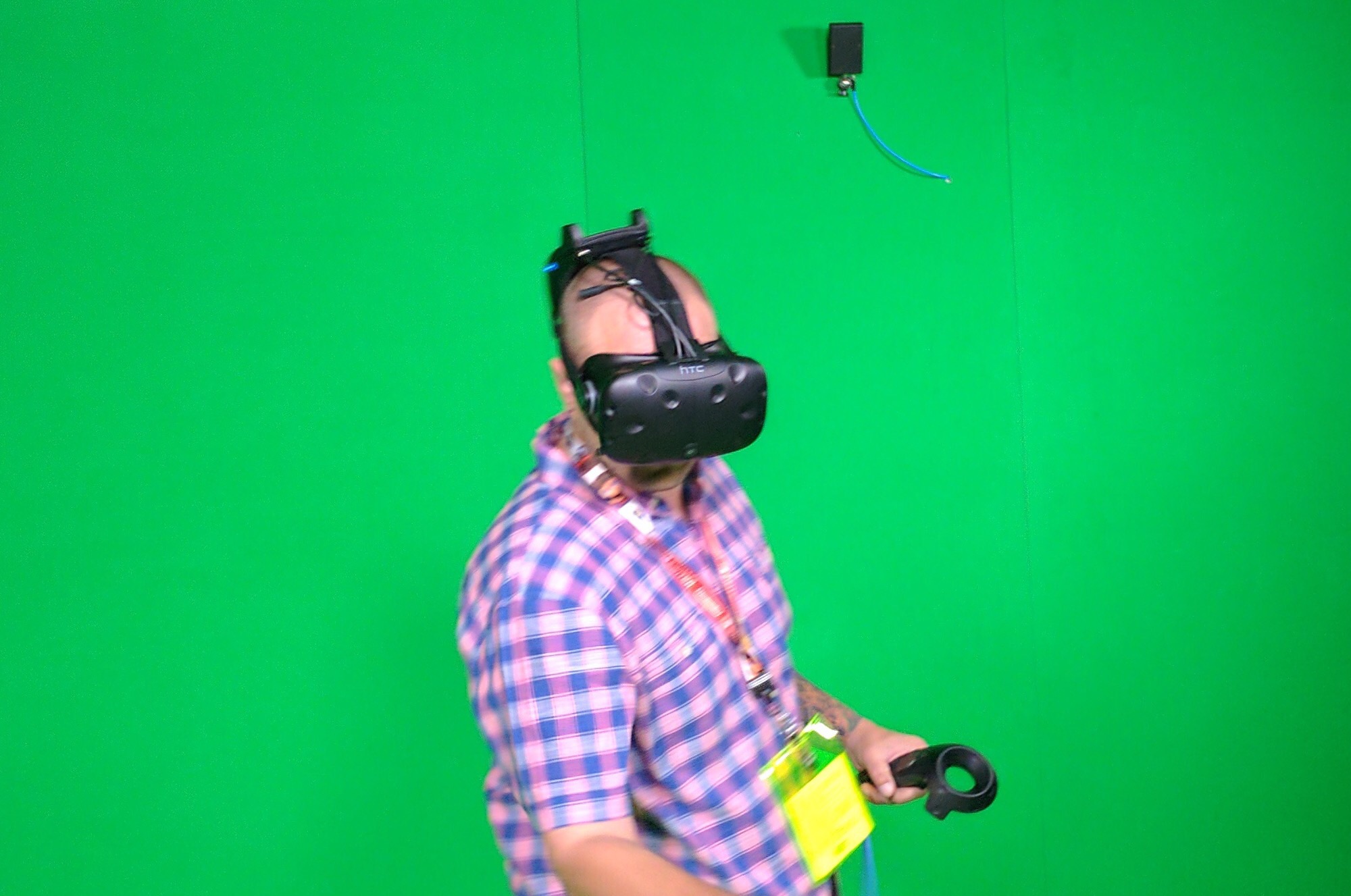Companies developing VR headsets are racing toward wireless six degrees of freedom. This means you can move in any way and your experience in VR matches what you would expect. Headset freedom seems to be virtually solved either using external sensors like Rift and Vive, or using inside-out tracking pursued by Google, Microsoft, Intel and Facebook.
These inside-out solutions are a great step forward for ease of use. It is much easier to get in and out of VR because there’s no setup involved, making it quick to move from one room to another. While Microsoft is shipping inside-out headsets that still tether to a PC for high-end rendering, this type of tracking is also a pathway to standalone systems that put everything needed for VR into the headset itself.
There’s a major limitation to these inside-out solutions though — controllers and input. We have yet to use compelling controllers that offer six degrees of freedom for your hands with an inside-out headset. Microsoft is planning a promising solution with a pair of light-up controllers that can be accurately tracked as long as they are in the view of the sensors on the front of the headset. This could be a sweet spot for Microsoft, but we are skeptical inverse kinematics and the sensors inside the controllers themselves can be used to provide experiences as compelling as what’s available with the HTC Vive or Rift with three sensors.
Which brings me to the most impressive and compelling VR experience I’ve ever had.
Here at E3 2017 I tried a pair of wireless VR prototype add-ons that worked with the HTC Vive. My favorite was the DisplayLink prototype wireless add-on which sat at the back of my head. This balanced the weight of the unit in such a way that I didn’t notice it. Also, unlike TPCAST, this position would move it out of the way of headphones. Another wireless unit I tried with Vive in Intel’s booth at E3 (in the video above) positioned it on the top of the head like TPCAST, and its loose fitting meant that even slight movements right or left would swing the unit from one side to the other on top on my head. This was very distracting.
But the DisplayLink prototype disappeared snugly on the back of the head. The moment I realized there was no noticeable lag, and I had the freedom to walk around a large room, I suddenly lost myself in a virtual world in a way I’d never before experienced. It might seem slight, but the wire between a Vive or Rift and the PC rendering a world at 90 frames per second is a huge impediment. When it is gone, you are never going to go back.
“I think once you’ve tried it without a wire, there’s no way you’d ever want to use it with a wire. The wire is like there’s a dog barking in the background. You can kind of tune it out but it’s still there. And when it stops barking you go ‘suddenly I’m here’,” said Graham O’Keeffe, CEO and Chairman of DisplayLink. “I think it is going to 100 percent attach rate. I don’t see why you would even consider having a wired VR system anymore.”
DisplayLink set up Longbow, one of my favorite games, and I found a grin stretching across my face the moment I realized there was no noticeable lag and I could walk around a large space with complete freedom. After a year and a half of fighting with wires every time I wanted to move around a virtual world, I was free from that nagging reminder. No more remembering to step over it, or to turn in a way that doesn’t tangle up my body.
I loosed arrows with complete freedom for the first time in my life and lit them on fire behind me without even looking at the flames. I moved with speed and ease from wall to wall, not worrying whether I was tangled up. I nocked the arrows on my bow and fired them into the incoming stick-men one after another after another. It was the best I’ve ever felt in VR and a joy to experience.
O’Keeffe might be selling some of the silicon chips that make this experience possible, but I have to agree with him. Everyone is going to be going wireless as soon as they can. No specific timeline has been provided, but I’m hoping by CES 2018 we’ll get consumer-facing announcements from a variety of companies providing this tech.





























